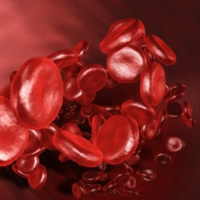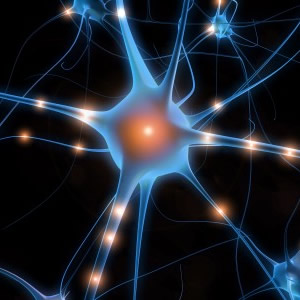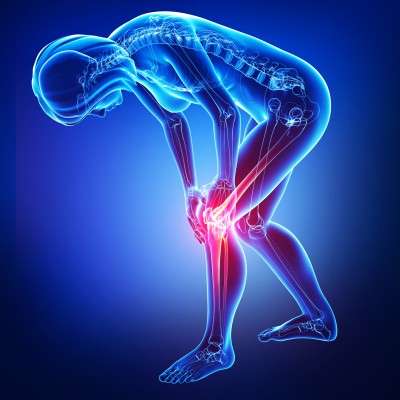What is PRP? (Platelet Rich Plasma)

What is PRP? PRP stands for Platelet Rich Plasma. The platelets are the component in the blood that is principally responsible for healing of injuries. Essentially, the platelets are little packages that contain a mixture of different growth factors that float around in the blood. The way it is supposed to work is that when the blood flows through an injury site, the inflammatory chemicals given off by that injury site trigger the platelets to release the growth factors and that is what initiates the healing process.
There are a couple of problems though with using the platelets in treatment. First off, the main area of damage in chronic musculoskeletal pain is in the connective tissue structures, such as, ligaments, tendons, cartilage, and the sheets of connective tissue between the bones, called fascia. The connective tissue is tough and difficult to damage, but when it does get damaged it is slow to heal. The primary reason the connective tissue is slow to heal is because it has a poor blood supply. If you look at anatomical illustrations of the musculoskeletal system you will usually see the muscles depicted as red and the ligaments and tendons as white, and this is the way it looks in reality. The reason being that the muscles are richly supplied with blood flow. That is why you seldom need to do anything to assist in their healing, but the connective tissues have a poor blood supply. That is why they are so pale. So, the first problem then is that you don't get much blood in the connective tissue to begin with.
The second problem is that the platelets are fairly diluted in the blood. They make up less than 5% of the blood volume, so what little blood gets into the connective tissues doesn't have very many platelets in it. That is also why it doesn't work very well to inject whole blood directly into the injury site. There aren't enough platelets in it, and, the iron that is in the hemoglobin of the red blood cells actually seems to interfere with healing. So, instead of whole blood, we draw the blood out of the patient and put it into a machine that separates the platelets from the rest of the blood, and then concentrates them. We then inject the purified and concentrated platelets into the damaged ligaments, tendons and other connective tissue structures. The platelets then do what they are supposed to do. They begin to release large quantities of growth factors which in turn cause the torn fibers of the connective tissue to reattach back to the bone, and to lay down new fibers so that it gets even thicker and stronger than before.
This same principle can be utilized for cosmetic purposes as well. Wrinkled, sagging skin is primarily due to loss of the integrity of the collagen in the skin. PRP injection into the collagen of the skin thickens and tightens it in the same manner that it does the ligaments and tendons and restores a more youthful appearance. This effect can be significantly enhanced if the PRP therapy is combined with laser treatment of the skin at the same time. Our office offers both of these options.
So what applications is PRP treatment good for? As previously mentioned, it is good for many different musculoskeletal pain problems, such as: PRP for shoulder pain, PRP for neck pain, PRP for back pain, PRP for neck pain, PRP for knee pain, PRP for hip pain, PRP for ankle pain, PRP for wrist pain, etc. Essentially, any musculoskeletal pain problem anywhere in the body is a potential candidate for PRP injections for treatment. PRP also has multiple cosmetics applications. It can be used for PRP facelift, PRP facials, in which it is applied via microneedling with PRP, PRP for hair loss, or PRP hair restoration, and others. Other applications include: PRP for erectile dysfunction, and PRP for urinary incontinence in females.





 Neural Therapy is a system of treatment for chronic pain. It involves the injection of local anesthetics into scars, autonomic ganglia (clusters of nerves), trigger points, acupuncture points, sites of trauma, glands and other tissues. It is thought to work through normalization of function of the autonomic nervous system. The autonomic nervous system is that part of our nervous system that controls things in our body we do not think about (automatic) acting as a control system largely below our level of awareness.
Neural Therapy is a system of treatment for chronic pain. It involves the injection of local anesthetics into scars, autonomic ganglia (clusters of nerves), trigger points, acupuncture points, sites of trauma, glands and other tissues. It is thought to work through normalization of function of the autonomic nervous system. The autonomic nervous system is that part of our nervous system that controls things in our body we do not think about (automatic) acting as a control system largely below our level of awareness. Prolotherapy is also known as nonsurgical ligament and tendon reconstruction or regenerative injection therapy, and is a treatment for chronic pain. It was originally called musculoskeletal sclerotherapy.
Prolotherapy is also known as nonsurgical ligament and tendon reconstruction or regenerative injection therapy, and is a treatment for chronic pain. It was originally called musculoskeletal sclerotherapy.